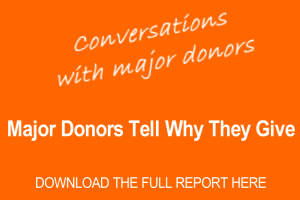Textraising (fundraising via text messaging) seems to be one of those ongoing “should we/shouldnt we” debates all fundraising teams have. Here in Ireland 2 billion text messages are sent every year (we are only a population of 4 million!). So people are heavy text users, different to the US where both the reciever and sender get charged, here it costs very little to send a text.
But I am yet to hear of a charity that has said…we did a text campaign and it was a massive success. So even though we use texting we dont seem to want to use it to donate. Typically what we have seen is people being offered a text shortcode and they send the amount they want to donate to that shortcode, or else a key word to the shortcode = a 2 euro donation.
Recently in the US the text response to the Haiti appeal amazed fundraisers (30 million raised by the Red Cross alone). So was this the tipping point for textraising in the USA? Were donors ready?
In Fundraising Success Magazine Jeff Brooks argues that
If you pushed just one person to give via mobile who otherwise would have given by any other medium, you lost a rather large bunch of money.
Jeff continues by asking the question:
I have to wonder how many of those 300,000-some text donations that went to the Red Cross could have been $90 Web gifts that also meant warm bodies who just might give again some day. How many people scratched their philanthropic itch with a quick, anonymous 10 bucks — when they might have happily gone online and joined the ranks of connected and considerably more valuable donors?
Jeff isnt saying dont textraise, but he is warning that you may just be helping people scratch “their philanthropic itch with a quick, anonymous 10 bucks — when they might have happily gone online and joined the ranks of connected and considerably more valuable donors?”
Convio released a report in March called “The Next Generationg of American Giving ” that aimed to examine what channels various generational categories of donors prefer to give by. In their report they note that giving via mobile/text is an emerging channel for GEn X & & donors“. Note…its emerging
 Commenting on Haiti’s textraising success the Convio report says that “In the wake of Haiti, SMS/text messaging is also deemed an appropriate solicitation channel by a good proportion of Gen Xand Y donors. While a relatively small proportion of donors (9percent) reported actually having given via SMS/text message,awareness of it as a giving option is now quite significant. 77 percent of donors surveyed responded that they had heard about the option of giving by text message to Haiti relief efforts, and 57 percent stated that they heard a lot.”
Commenting on Haiti’s textraising success the Convio report says that “In the wake of Haiti, SMS/text messaging is also deemed an appropriate solicitation channel by a good proportion of Gen Xand Y donors. While a relatively small proportion of donors (9percent) reported actually having given via SMS/text message,awareness of it as a giving option is now quite significant. 77 percent of donors surveyed responded that they had heard about the option of giving by text message to Haiti relief efforts, and 57 percent stated that they heard a lot.”
Of course what is interesting there is that only 9% actually gave via this method.
Convio do believe though that “Mobiles time is coming”. They liken its rise to the rise in online giving:
In 1999, Internet fundraising went through a critical growth phase as donations for the crisis in Kosovo and then Hurricane Mitch spurred a massive increase in online giving. In 2001, in the wake of 9/11, online giving reached the hundreds of millions. In 2004, Howard Dean made history with his largely web funded presidential bid. By 2005, the question of the value of the Internet in philanthropy was settled.
A decade later, mobile giving is on a similar rising path, with Haiti possibly mirroring Kosovo and Mitch. Seventy-seven percent of respondents to the survey had heard something about mobile giving options for Haiti relief . Nine percent actually donated and another 22 percent say they considered it (Figure 9).
But what is mobile giving, and what will it be? For the tens of millions of iPhone, Blackberry and Droid users, it’s almost as easy to give via an app or via direct access to the web as it is to make a small gift via a short SMS code. So while there is a big and bright future for giving via the device that is always at our side, just what form that giving will take is anyone’s guess.
That last line says it all doesnt it…what form that giving will take is anyones guess.
I have seen texting work well in one context, in some events we are involved with we ask people to respond to a text number they would already be aware of and use regularly and we call them back to take their donation. So we arent actually using text to take the donation but instead we are almost using it as permission to call them. And yes we do lose a % of people, ones who just never answer their phone to us because when we call them they arent able to take our call, but its not a very high %. It isnt a cold ask either, we link the ask to some incredibly compelling stories and a clear and direct ask.
The question of whether to textraise or not will rage on. Are we leaving money on the table by scratching the itch as Jeff suggests or are we actually getting donations from people who would otherwise not give?
I would love to hear of any examples people have of text campaigns that have worked?







